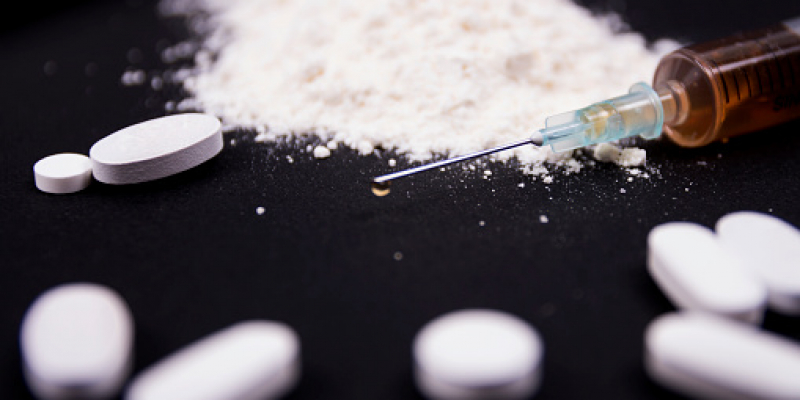
Although the numbers aren’t final, the most recent estimates of drug overdoses throughout America for 2016 are shocking to say the least. It’s especially alarming considering the amount of legislation passed within the last year and the number of new programs initiated to fight against the drug epidemic. With the totals likely to exceed 59,000, a 20 percent increase from 2014, it leaves many of us baffled, wondering…”Is all this work for nothing?”
It’s difficult to not get discouraged when reports of this nature surface. Unfortunately, many medical experts believe the problem will only get worse, before it gets better. With illicitly manufactured opioid analogs crossing our borders from the south and the east, the New York Times tells us drug overdoses are now the leading cause of death for Americans under the age of 50. Many want to blame prescription painkillers for this disturbing news, and while they most certainly play a role, the reality is so much bigger than pharmaceuticals. So, what exactly are the numbers, what states were affected the most, what is causing this, and why are new laws and restrictions not preventing more drug overdoses?
Those Hit The Hardest
The drug crisis in which our nation currently finds itself has crossed all boundaries. From rural populations to wealthy suburbs, to celebrities and the homeless, from African Americans to Hispanics and Caucasians; no one is exempt. The Centers for Disease Control and Prevention will not have final numbers until December, because deaths related to drug overdoses take quite a long time to fully confirm. Nevertheless, the New York Times compiled estimates from hundreds of county coroners and state health departments. Some regions throughout our country have been hit harder than others…this is especially so for states across the East Coast, including Maryland, Florida, Pennsylvania, Maine, Massachusetts, and so on. Most disturbingly, while most states saw a 20% increase in drug overdoses, Ohio is estimated to have a 25% increase in deaths related to overdose. One might wonder, why? Why these states?
There could be several explanations as to why these states, including Pennsylvania, have had devastating results from the drug epidemic. Like many other regions in the country, the East was hit hard by the recession of 08’, where many lost their jobs and began spiraling toward poverty levels. Just this past January, NBC News featured a story dubbing Wilkes Barre, Pennsylvania “The Most Unhappy Place in America.” In the article they describe how Wilkes Barre was once a booming town of manufacturing, coal mining, and industry. After subsequent blows, such as the closing of the mines to the flood of 72’, Wilkes Barre became a city of boarded up store fronts and abandoned buildings. As financial hardship came over our town, depression likely set in, creating a cycle of addiction throughout Wilkes Barre families and generations to come. Those generations are now the countless dying from drug overdoses today.
Other Explanations
While many factors have contributed to the addiction crisis in America, including over-prescribing painkillers to the recession of 08’, experts believe one major reason for the surge in drug overdoses in the East is directly correlated with the divide in the heroin market. According to Dr. Dan Ciccarone, professor of family and community medicine at the University of California, the difference in drug overdoses in the East and West may have something to do with the product. While the West shows no evidence of lower severity levels in opioid addiction, estimates show that drug overdoses have leveled off and may even decrease. The difference? Black tar heroin vs. powder heroin. Black tar is predominately popular in Western states, whereas east of the Mississippi, the product comes in a powder form. This leaves the East more vulnerable to synthetically made opioids, such as Fentanyl and Carfentanil, to be laced into heroin. Dr. Ciccarone believes if the Western market shifts to powder heroin, we will surely see an increase of drug overdoses in those regions.
Take Carfentanil for example. An extremely potent synthetic opioid originally manufactured as a sedative for large animals, such as Elephants and Rhinos. This July will mark one year since its introduction to heroin users in Akron, Ohio. Somehow, someway, this deadly chemical made its way into the hands of dealers and addicts alike, causing 17 drug overdoses in a nine hour span. In the matter of 6 months, it killed 140 people in Akron alone, going on to end the lives of so many more in neighboring cities and states, including Pennsylvania. While Carfentanil is a threat all on its own, other synthetic opioid analogs are popping up in laboratory tests nationwide, making it nearly impossible for law enforcement officials to keep up.
Why Haven’t Our Efforts Worked?
Our current state of affairs is horrifying. Allow the numbers to speak for themselves. So, where are we going wrong and what else could be done? Firstly, let’s start by saying that the efforts that have been made are most certainly praise worthy. New prescribing regulations have been put in place, Naloxone has become more widely available, and new prevention methods are being utilized. Also, the 21st Century Cures Act just allocated $1 billion for substance abuse treatment and prevention. It is clear that our government is beginning to see just how grave of a situation we are in.
Nevertheless, while we put most of our focus on prescription opioids, and how to better prescribe these addictive medications, we forget one thing. As these regulations will certainly aid in the prevention of addiction of future generations, it does not address those who are addicted right now. What is happening more often than not, when an addict is no longer able to get the opioids they need from a doctor, they turn to harder drugs, such as heroin. When this happens, they immediately have the potential of purchasing a bag laced with Fentanyl or Carfentanil. As for Naloxone, which is now carried by all first responders and available in many pharmacies across the U.S., it is not always a lifesaver in the case of synthetic drugs. Reports in Ohio tell us that sometimes users are given an upward of 12 Naloxone shots without revival, especially when Fentanyl and Carfentanil are involved.
As it continuously boils down to synthetic opioids that are being smuggled in through Mexico, China, and the internet, should we not look further into stricter border control and harsher penalties for those selling the drugs? It seems the manufacturers of these chemicals are always one step ahead of us. As we ban more opioid analogs, they create new ones, making it nearly impossible to regulate them all. Although some critics disagree, arguing we are using the old “War on Drugs” tactics, Congress is currently drafting new legislation that would impose stricter prison sentences to those selling synthetic drugs. Anyone caught selling these deadly chemicals could face a 10-year sentence. Some argue this measure is too harsh and repeats past mistakes of being “tough on crime,” since we will most certainly find many dealers who are unaware that their heroin is contaminated with synthetic drugs. But in the same regard, they are selling heroin! Should they not be held responsible for that? Yes, this bill may need some adjustments, nonetheless, it’s the first to address the issue of ALL synthetic drugs plaguing our country. And maybe, possibly, those dealers could lead us to the “higher-level” dealers and manufacturers.
Contact Clearbrook Today
Clearly, our problem is far from over. Drug overdoses are now the number one cause of death for Americans under the age of 50. Although we have made headway in preventing addiction in future generations, there is still so much work that needs to be done for those who are currently struggling. As addiction is an inclusive disease, we most certainly need all hands on deck. We can’t expect one piece of legislation or one grant to do the trick. We need to address this epidemic on all fronts, including more treatment resources, more prevention methods, better border control, and more law enforcement activity.
If you or someone you love is currently caught in the grips of addiction, there is a way out…your story does not have to end with an overdose. Through the process of treatment and recovery, we have found a better way of living. For more than 40 years, Clearbrook Treatment Centers has been providing quality treatment to those who suffer from alcoholism and drug addiction. If you are ready to take the first step, please contact our Admissions Specialists today. Let us show you what else life has to offer!







